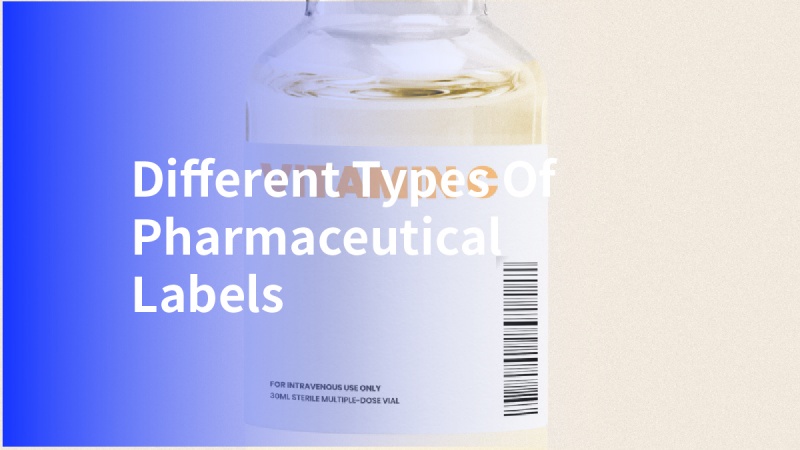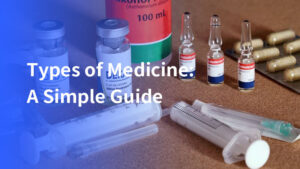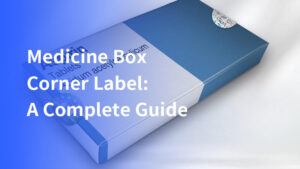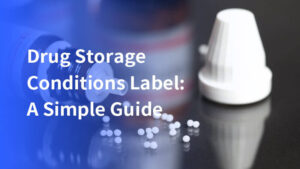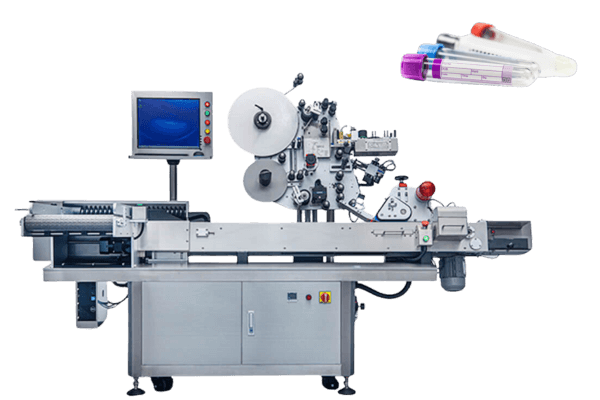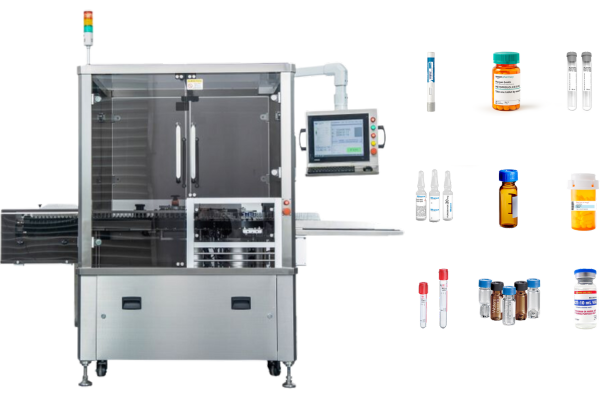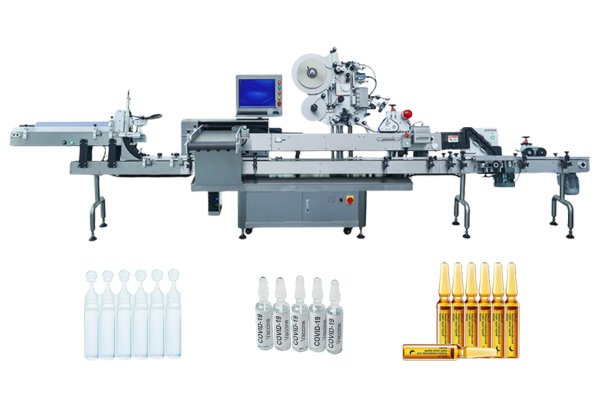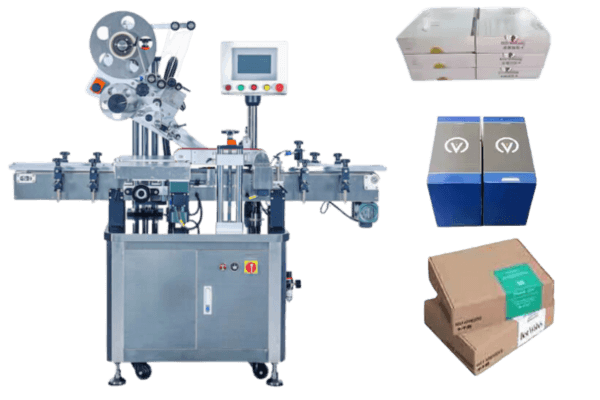Pharmaceutical labels tell important facts about medicines. They help doctors and patients use drugs safely. Pharmaceutical packaging is important because it protects people and follows rules.
In this blog, we will talk about the types of labels used in the pharma area, why they are needed, and how they help keep patients safe and follow rules.
Pharma label types by contents
Brand labels
These labels show the name and logo of a medicine. They help people recognize the medicine on the shelf. Brand labels also help people choose the right product when there are many options.
Ingredient labels
Ingredient labels list what the medicine is made of. They show both active ingredients, which cause the effect, and inactive ones that help make the medicine. Knowing what’s inside helps people avoid allergic reactions.
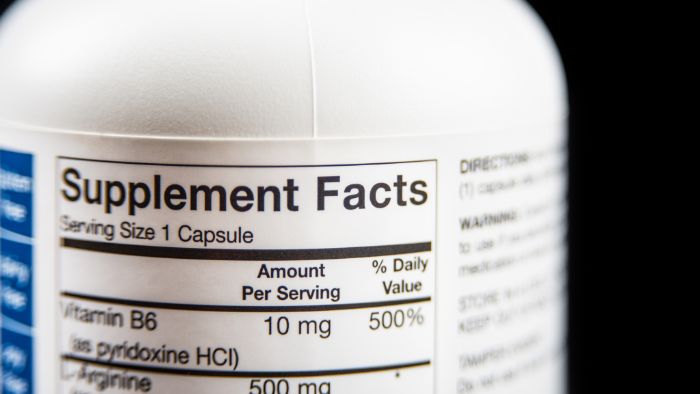
Dosage labels
These labels tell people how much medicine to take. They explain how often to use it, like once or twice a day. Following these instructions ensures people use the medicine safely and effectively. These labels are especially important for prescription medicines.
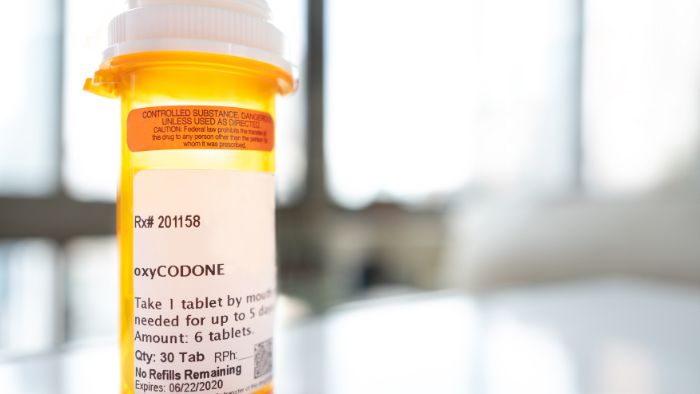
Warning labels
These labels highlight any risks or side effects. They tell people what to watch out for when using the medicine. Warning labels help keep patients safe by preventing harmful reactions or misuse.
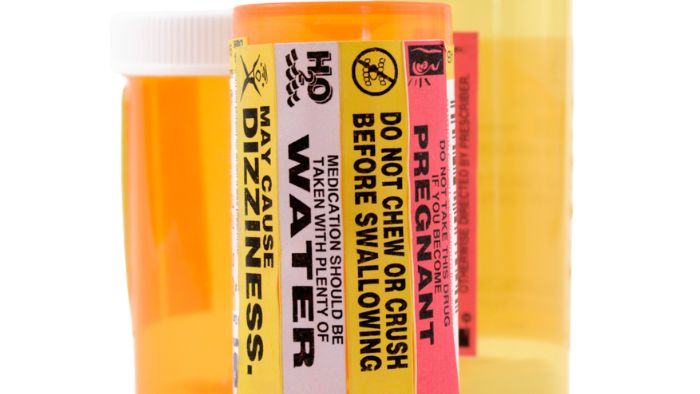
Barcode labels
These labels have barcodes that stores scan. Barcodes help track the medicine and keep shelves stocked. They also make checkout faster and easier for both stores and customers.
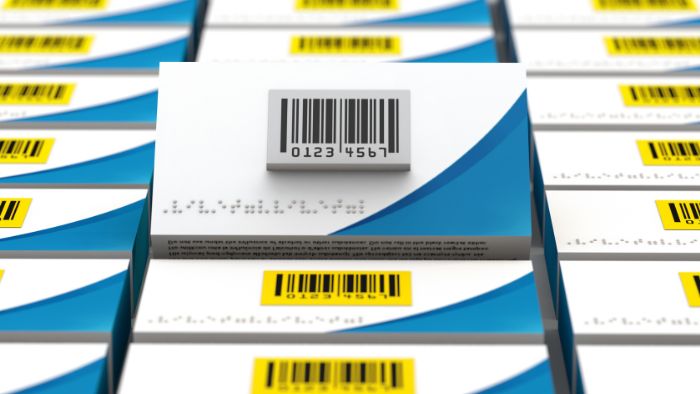
Eco-friendly labels
These labels show if the packaging can be recycled. They encourage people to care for the planet by recycling. Eco-friendly labels remind us to reduce waste and help protect the environment.
Pharma label types by uses
Anti-counterfeit labels
These labels use special technology to stop fake medicines. They often include things like holograms or special codes. This helps people trust that the medicine they are using is real and safe.
Without these labels, it would be easier for fake products to enter the market, which can be dangerous.
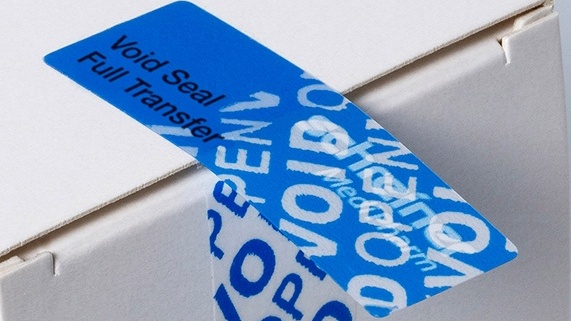
Smart labels
These labels have digital tools like RFID, which stands for Radio Frequency Identification. This technology can track where the medicine is and helps companies manage their stock.
Smart labels also help hospitals and pharmacies make sure they never run out of important medicines. Some smart labels even let patients track their medicine at home.
Temperature-sensitive labels
These labels change color or shape if the medicine gets too hot or too cold. Some medicines must stay in a certain temperature range to work properly.
If the label changes, people know the medicine might not be safe anymore. This helps protect the quality and strength of the medicine, especially during shipping.
Tamper evident labels
These labels show if someone has opened or messed with the package. They help keep patients safe by letting them know if the medicine has been tampered with.
If the label is broken or damaged, people will know not to use the product.
Pharma label types by material
In general, based on the type of label material, we classify all drug labels on the market into the following 6 categories:
Synthetic paper labels
Synthetic paper is a special type of plastic that looks and feels like regular paper. It is durable, waterproof, and tear-resistant, making it ideal for medicine packaging. This material is commonly used for labeling bottles of liquid medicine or medication boxes that might be exposed to moisture.
PET labels
PET is a strong and clear plastic material. It is often used for labeling medicines because it can withstand heat and chemicals. You will often find PET labels on pill bottles, syrup bottles, and other liquid medication containers that need a clear and tough label.
PVC labels
PVC is a flexible and durable plastic. It is commonly used for labeling blister packs (the packaging with individual slots for pills) and inhalers. PVC is great for labels that need to be strong and resistant to damage.
BOPP labels
BOPP is a lightweight, flexible plastic film. It is known for being clear, resistant to water, and tough. It is often used for labeling sachets (small bags of powder or liquid medicine), ointments, and creams because it can handle oils and liquids without tearing.
Pearl film labels
Pearl film has a shiny and pearly appearance, which gives labels a premium look. This material is often used for cosmetic medicine packaging or high-end health supplements where the product’s look is important. It is also water-resistant and durable.
Thermal paper labels
Thermal paper is used for printing labels that require barcodes or expiration dates. It is heat-sensitive and can be used without ink, which makes it convenient for pharmacy labels or temporary medication instructions. These labels are often found on pill bottles and medicine boxes in pharmacies.
Pharma label types by postions
Based on the label positions, we categorize drug labels into the following three types:
Bottle label
A bottle label is the label that sticks directly to the medicine bottle. This label usually includes important information like the medicine’s name, dosage, and expiration date. It helps people know what’s inside the bottle and how to use the medicine safely.
Inside box label
An inside box label is a label placed inside the medicine box, such as the instruction leaflet. This label gives detailed information about how the medicine should be taken, possible side effects, and storage instructions. It’s very important to read this label to understand how to use the medicine properly.
Outer box label
The outer box label wraps around the outside of the medicine box. It usually contains the product name, the manufacturer’s information, and sometimes even a barcode. This label helps identify the medicine from the outside and provides basic details before the box is opened.
Pharma label types by printing types
Offset printing label
Offset printing labels have bright colors and high-quality printing. This method is best for producing a large number of labels. It’s commonly used for mass production of medicine labels where the design needs to be clear and professional.
Flexographic printing label
Flexographic printing is faster and cheaper than offset printing. It’s a good choice for smaller batches of labels. This method is often used when there is a need to produce labels quickly and at a lower cost, but still with good quality.
Digital printing label
Digital printing allows for personalized and customized labels. It’s perfect for small batches and a variety of different medicines. This type of printing is used when medicine labels need to be tailored for specific products or limited editions.
Pharma label types by regulations
Prescription drug label
Prescription drug labels have specific requirements set by regulations. These labels must include important details like the doctor’s instructions, dosage, and warnings. Only people with a prescription from a doctor can buy these medicines, and the label helps ensure they use it safely.
Over-the-Counter (OTC) drug label
Over-the-counter drug labels also have their own set of rules. These labels must clearly show the medicine’s name, usage instructions, ingredients, and warnings. OTC drugs can be bought without a prescription, so the label provides all the necessary information for safe use.
Traditional Chinese Medicine (TCM) label
Traditional Chinese medicine labels follow special rules designed for these types of products. The label must include details about the herbs or ingredients used, how to take the medicine, and any safety precautions. This helps people use TCM products correctly and safely.
Considerations for choosing pharmaceutical label
Material selection
It is important to pick strong materials for labels. These materials need to last in different storage places, like cold or hot areas.
For example, some medicines are kept in refrigerators, and others in warm places. The label must stay in good condition no matter where it is stored.
Strong materials also help the label stay readable for a long time, even if the bottle is used often.
Regulatory compliance
Labels must follow rules set by health organizations. These organizations make rules to keep people safe.
In this section, we provide 2 aspects to explain it.
Information that must be included on drug labels
- Drug name: including generic name and trade name.
- Ingredients: The active ingredients contained in the drug and their content.
- Indications or main functions: The diseases that the drug is used to treat or prevent.
- Specifications: The dosage form and dosage of the drug.
- Usage and dosage: The correct method and dosage of the drug.
- Adverse reactions: The adverse reactions that the drug may cause.
- Contraindications: Patients or conditions in which the drug is prohibited from use.
- Precautions: Matters that need to be paid attention to when using the drug.
- Storage method: Storage conditions of the drug.
- Date of production: The date of production of the drug.
- Batch number: The batch number of the drug.
- Expiration date: The expiration date of the drug.
- Manufacturer: The name and address of the drug manufacturer.
- Approval number: The approval number of the drug.
Regulatory rules for drug labels
All countries have detailed regulations on the regulation of drug labels. Generally speaking, drug labels must meet the following requirements:
- Authenticity: The information on the label must be true and accurate, and must not be exaggerated or falsely advertised.
- Completeness: The label must contain all necessary information without omissions.
- Clarity: The text, symbols, etc. on the label must be clear and easy to read.
- Uniformity: The information on the label must be consistent with the drug instructions.
- Safety: The information on the label must not mislead consumers and cause medication errors.
Following these rules helps make sure the medicine is made and labeled the right way. If the labels don’t follow the rules, the medicine could be unsafe to use.
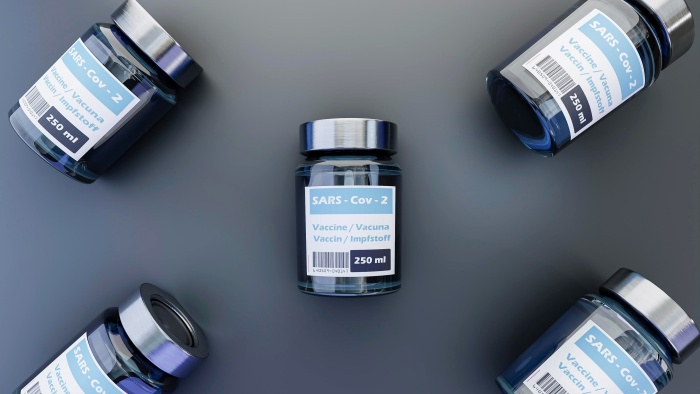
Ensuring patient safety with pharmaceutical labels
Pharmaceutical labels are important for keeping patients safe. They also help follow health rules and make sure medicines are used correctly. Labels give doctors and patients the information they need to use medicines safely.
Labeling rules protect people by ensuring all the necessary information is there. Putting the drug name on both the main label and backup label is important. This helps doctors, nurses, and patients know exactly what the medicine is.
As the pharma area changes, new labeling rules and ideas make medicines safer. These rules apply to syringes, vials, ampoules, tamper-evident seals, tubes, and pill bottles.
Different labeling machines are essential for applying various pharmaceutical labels accurately. Each type of label may require a specific machine to ensure it adheres properly and conveys the necessary information.
For example, machines designed for bottle labels may differ from those used for syringe or box labels, ensuring that all labeling requirements are met effectively.
